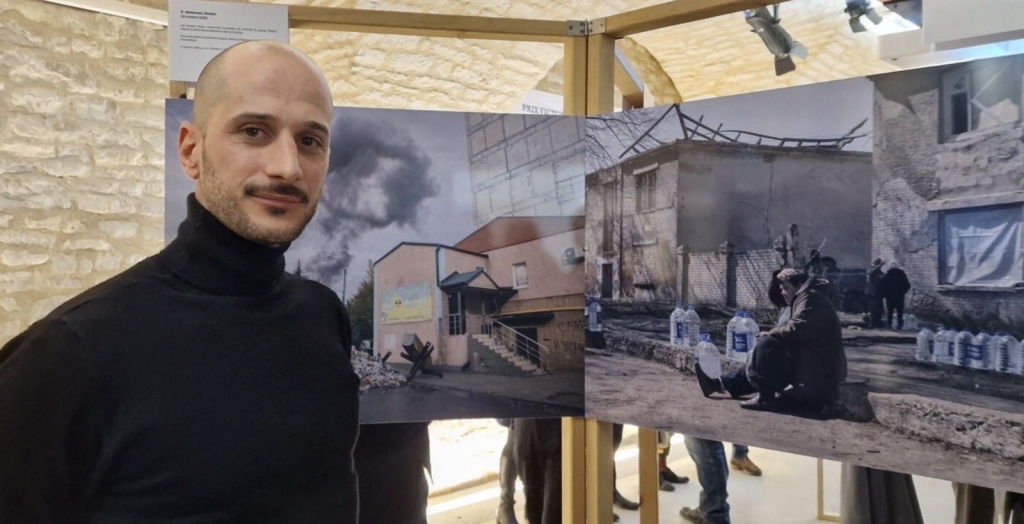French Photojournalist Antoni Lallican Killed By Russian Drone Strike In Ukraine

DJI Mavic 4 Pro with DJI RC 2 for $2,819 on Amazon!
French photojournalist Antoni Lallican, 37, was killed by a Russian FPV drone attack while covering the war in eastern Ukraine on Friday, October 3, marking the first journalist death by drone in the nearly three-year conflict. The European and International Federations of Journalists condemned the attack as a war crime, calling for an investigation into those responsible.
This tragedy underscores the escalating dangers facing journalists documenting the Ukraine war as FPV drones increasingly target civilians in frontline areas. For drone pilots and industry professionals, it highlights the deadly dual-use reality of drone technology in modern warfare.
Attack Details and Circumstances
Lallican and Ukrainian photographer Heorhii Ivanchenko were embedded with Ukrainian forces near Druzhkivka in the Donetsk region, approximately 12 miles (20 kilometers) from the front line, when the attack occurred Friday morning. According to Ukraine’s 4th Separate Mechanized Brigade, both journalists were wearing personal protective equipment with “PRESS” identification clearly marked when the Russian first-person-view drone struck. Ivanchenko was wounded but remains in stable condition.
FPV drones are quadcopters equipped with forward-facing cameras that transmit live video to operators wearing virtual reality goggles. Russian forces have increasingly deployed these inexpensive drones—costing just a few hundred dollars—to deliberately target civilians, ambulances, and aid workers in frontline communities like Kherson, according to multiple human rights investigations.
Award-Winning War Photographer
The Paris-based photojournalist had been covering Ukraine since March 2022, immediately following Russia’s full-scale invasion. His powerful imagery appeared in leading publications including Le Monde, Le Figaro, Der Spiegel, and The New York Times.
In January 2025, Lallican won the 2024 Victor Hugo Prize for Committed Photography for his series “Suddenly the Sky Darkened,” documenting the war’s impact on Ukrainian civilians. Just one week before his death, he posted on Instagram about the constant threat of kamikaze drones to civilians and soldiers in contested areas.
International Response and Growing Death Toll
French President Emmanuel Macron expressed “deep sadness” at Lallican’s death in a post on X, saying he “died while doing his job, bearing witness to the consequences of war.” Ukrainian Foreign Minister Andriy Sybiga accused Russia of “deliberately targeting journalists” in violation of international humanitarian law.
The International Federation of Journalists reports 17 journalists have now been killed covering the Ukraine war since February 2022, though some estimates place the number as high as 22. Lallican is the fourth French journalist killed, following AFP’s Arman Soldin, BFMTV’s Frédéric Leclerc-Imhoff, and Fox News cameraman Pierre Zakrzewski.
Sergiy Tomilenko, president of Ukraine’s National Union of Journalists, stated “the Russian army is deliberately hunting those trying to document war crimes.” Reporters Without Borders called for a swift investigation into the attack.
DroneXL’s Take
This tragic loss hits particularly hard for anyone in the drone community. The same FPV technology we’ve celebrated for racing, cinematography, and search-and-rescue operations has become a precision weapon deliberately targeting journalists trying to document the truth.
We’ve extensively covered Ukraine’s innovative drone warfare tactics, including their long-range strike capabilities and crowdfunding platforms that supply frontline units. But Lallican’s death—wearing clearly marked press identification—represents a chilling escalation. Human Rights Watch has documented hundreds of Russian FPV drone attacks on civilians in cities like Kherson, with operators using high-definition camera feeds that leave no doubt about their targets.
The use of commercial drone technology for targeting noncombatants raises urgent questions about manufacturer responsibility, export controls, and international humanitarian law enforcement. As the drone industry continues advancing this technology, we must reckon with how easily these tools can be weaponized against the very people trying to show the world what’s happening.
What do you think? Share your thoughts in the comments below.
